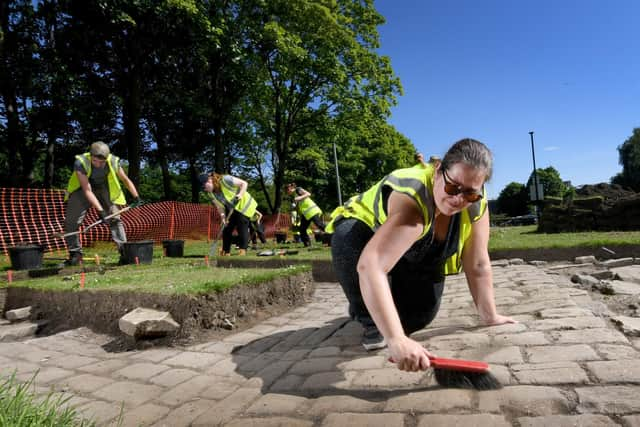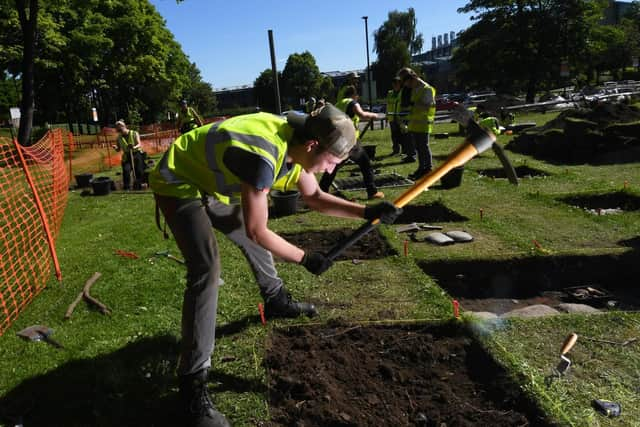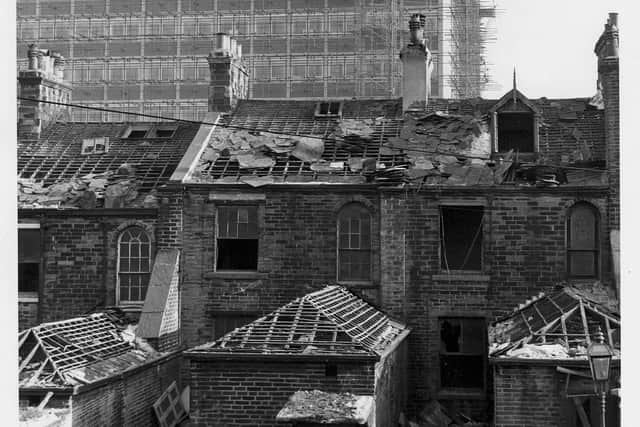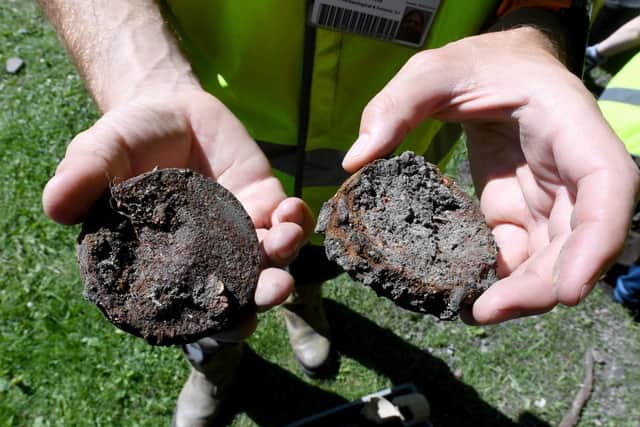Yorkshire archaeologists sensationally discover new Victorian site in Bradford
Archeologists at one of Yorkshire’s universities, who have had to turn their focus far closer to their base, have now found an intriguing insight into the Victorian era, and hope the discovery will help gain a greater understanding not just of yesteryear, but also help in the culture policies for the future.
Over the past three weeks, a 16-strong excavation team from the University of Bradford have unearthed a Victorian street running through and near their campus.


Advertisement
Hide AdAdvertisement
Hide AdThe cobbled street dates from roughly 1870 and runs between the two rows of terraced housing on Miall Street and Longside Lane.
The student team, led by Dr Ben Jennings, from the School of Archaeological and Forensic Sciences at the university, has also discovered domestic house remains, including blue and white patterned willow pottery and glassware, as well as yards and outhouses.
Dr Jennings told The Yorkshire Post the terrace houses were a “surprise” discovery due to them being knocked down in the 1950s and 1960s when the University of Bradford was constructed and student halls were built on the same area, which in turn have since been demolished.
He said: “The fact that we still have the remains… is quite surprising.


Advertisement
Hide AdAdvertisement
Hide Ad“It’s been quite a challenging dig as although it's fairly recent - so it is fairly shallow in terms of the depth we have to go to... because it is a large demolition zone where the houses were eventually demolished, a lot of it has been fairly substantive rubble material to get through.”
A protective membrane was placed down today, Friday June 11, and the trenches will be filled, allowing further excavation by next year for students.
Dr Jennings, 39, who has worked at the university since 2014 and specialises in underwater or wetland sites, said it was a vital find and an ongoing project for the city.
He added it was only made possible due to the Covid-19 pandemic which meant annual fieldwork in Orkney was swapped for a project far closer to home, while stressing the discovery added extra “bite” to Bradford’s bid to become the Capital of Culture for 2025.


Advertisement
Hide AdAdvertisement
Hide AdHe said: “This is all about the human connections and human stories and understanding of how people lived in the area
“It’s a really good opportunity for general social awareness and general understanding of the history of the city.
“If we look at the Bradford City of Culture for 2025, then I think this gives a bit of teeth to add to that wider social and community understanding of Bradford.
“It gives further clues to what the city used to be like in the past, and where we might want to go as a future city in terms of cultural direction.”


Advertisement
Hide AdAdvertisement
Hide AdDr Cathy Batt, the head of the School of Archaeological and Forensic Sciences, said there is currently a national shortage of archaeologists students, meaning the University of Bradford archeologists are regularly headhunted.
Dr Batt, who has worked at the university for 25 years and conducted fieldwork in locations including Sri Lanka, Pakistan and the Shetland Islands, stressed the need to invest in the discipline.
She said: “When you discover objects like this, it doesn’t matter whether it's 70 years or 7,000 years, it’s the story that object reveals in terms of its human connections.”
Dr Jennings added: “Archeology is a really important discipline. Not only for providing vital insights into how people have lived in the past but also adaptations that were made in the past, and indications for sustainability going forward.
Advertisement
Hide AdAdvertisement
Hide Ad“It can feed a significant amount into contemporary discussions.”
__________
Support The Yorkshire Post and become a subscriber today.
Your subscription will help us to continue to bring quality news to the people of Yorkshire. In return, you'll see fewer ads on site, get free access to our app and receive exclusive members-only offers. Click here to subscribe.
